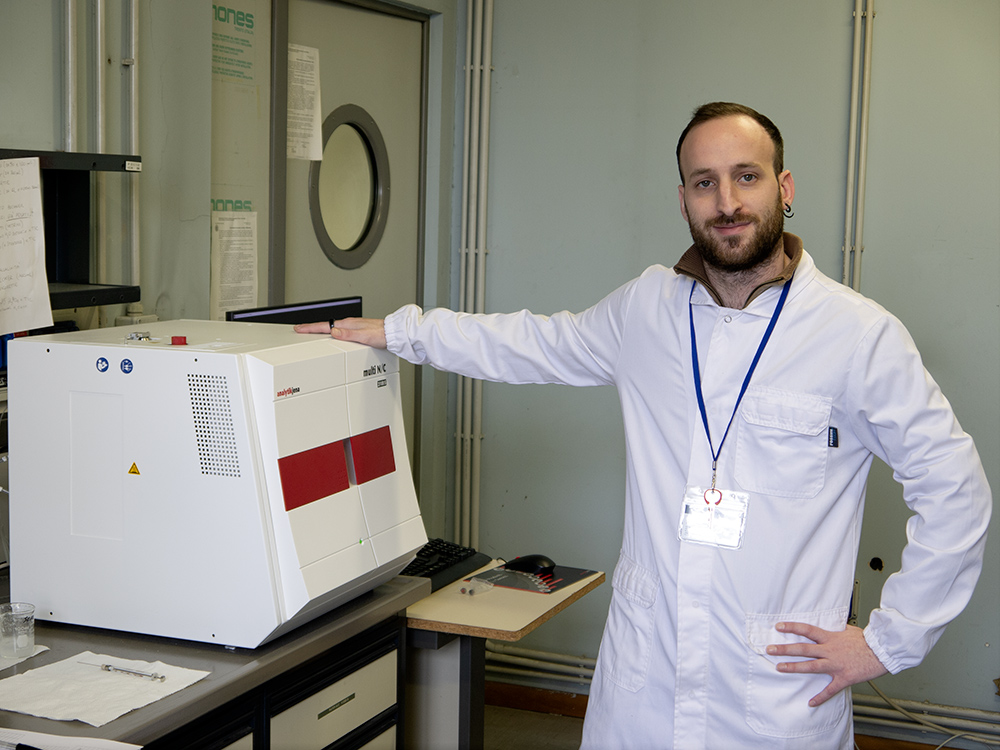Scientific researches
Limenet has collaborated with scientists from Politecnico di Milano, Milano-Bicocca University and CMCC to study all uncertainties related to the process.
Specifically, Limenet is conducting research in the areas listed below.
Abiotic precipitation
Marine storage of CO₂ in the form or hydrogen carbonate and carbonate ions appears to be a viable option for the long‐terms storage of CO₂, as emerged in the results of research conducted in the last years.
CO₂ is known to be stable in water in the form of bicarbonates ions or carbonate ions (the relative quantities depend on the pH, temperature, pressure, etc.).
Adding alkalinity to seawater shifts the pH and carbonate ion concentration and could cause abiotic precipitation of calcium carbonate (CaCO₃) or brucite (Mg(OH)₂). This is important to characterize as this precipitation results in CO₂ outgassing. It remains to be determined what specific combination of suitable nucleation conditions and supersaturation of CaCO₃ is needed to cause significant precipitation. Abiotic precipitation can be minimized by controlling the particle dissolution rate and the dilution and dispersal of equilibrated alkalinity-enhanced water. (Source Carbon Plan¹)
During 2022-2023, Limenet developed two experimental research projects with Politecnico di Milano to study the chemical stability of equilibrated alkalinity added into the sea.
This was done by simulating different calcium bicarbonate concentrations in different seawater samples.
This helped us to reach specific levels of bicarbonate saturation (Omega Aragonite), critical for abiotic precipitation.
The experiments were divided into two parts:
-
Laboratory experiments
-
Field experiments
Preliminary experiments
Initial sampling
Field experiments
Weekly sampling

Sampling in La Spezia
Transport in Milan
Analysis of TIC, alkalinity and pH

Preliminary experiments
Initial sampling

Field experiments
Weekly sampling

Sampling in La Spezia
Transport in Milan
Analysis of TIC, alkalinity and pH
For three months, we were able to test the chemical stability and assess the feasibility of adding water with bicarbonates already equilibrated with CO₂, compared to the traditional ocean alkalinization approach, which involves adding a reactive alkaline substance, such as slaked lime.
The results were similar to those found by other research groups, such as Moras et al (2021)² and Hartmann et al (2023)³. With saturation levels of Omega aragonite = 7 and Omega calcite = 11, it was possible to achieve the chemical stability of the calcium bicarbonates produced at the Limenet facility in La Spezia, Italy.
This test led to the development of a method to study abiotic precipitation and understand its efficiency compared to theoretical predictions.
Further tests are scheduled for the near future.
The work aimed to understand the chemical stability and kinetics of calcium bicarbonates over time to ensure the long-term preservation of carbon in seawater. We would like to thank Professors Piero Macchi and Guido Raos from the Department of Chemistry at the Politecnico di Milano, as well as Professor Stefano Caserini (now at the University of Parma), for their contributions to this project, along with PhD candidates Selene Varliero and Federico Comazzi.
A scientific article detailing the research has been published and is available at the following link: Varliero et al.
Biotic precipitation
Since calcification releases CO₂ as a byproduct, it is essential to consider any changes in the rate of biotic calcification in response to the addition of alkalinity to the ocean surface. Changes in biotic calcification rates could occur both in coastal waters and in open sea environments, affecting individual calcifiers or populations of calcifiers.
This research aims to quantify the biotic response of calcification to the addition of alkalinity. Limenet has conducted specific experiments with benthos and plankton, supervised by Professor Daniela Basso from the University of Milano-Bicocca. This research has been carried out in 2024 in collaboration with Professor Daniela Basso and Professor Arianna Azzellino from the Politecnico di Milano.
Marine bicarbonate monitoring
To avoid abiotic and biotic precipitation, is important to study the Omega Aragonite and Calcite saturation across the injection site of Limenet facility.
The aim of this work is to simulate the distribution of a discharge of calcium bicarbonate in a deep ocean environment.
The aim of the simulations will be to evaluate the distribution of the saturation state of the water Ω during a discharge cycle, in order to assess the probability of carbon dioxide leakages, thus studying a suitable discharge method to minimize the risk.
The work aims to understand the modeling choices made, the underlying assumptions, the equations adopted, the simulated environment, and the computational aspects of interest. Special thanks go to Diego Bindoni (Politecnico di Milano), Professor Antonella Abbà, and Professors Stefano Caserini, Piero Macchi, and Guido Raos from the Politecnico di Milano for their contributions to this project, as well as to PhD candidate Selene Varlerio and the entire CMCC team, particularly Giovanni Coppini, Simona Masina, and Tommaso Lovato.
For additional information download Limenet’s report.
Effect on marine biota of calcium bicarbonates
Limenet did a qualitative test in mesocosm during 2022-2023 at La Spezia Facility.






Between 2022 and 2023, Limenet conducted a qualitative test in the mesocosm at the La Spezia facility.
An improvement in the quality of the calcifying organism was observed in the mesocosm with higher alkalinity; however, it has not yet been possible to estimate the effect quantitatively. Further tests will be conducted to evaluate the beneficial impact of bicarbonate discharge on marine biota. This work will be carried out by Professors Daniela Basso and Arianna Azzellino, who have previously authored a study at the mesocosm scale related to a discharge of slaked lime.
https://meetingorganizer.copernicus.org/EGU23/EGU23-10342.html




